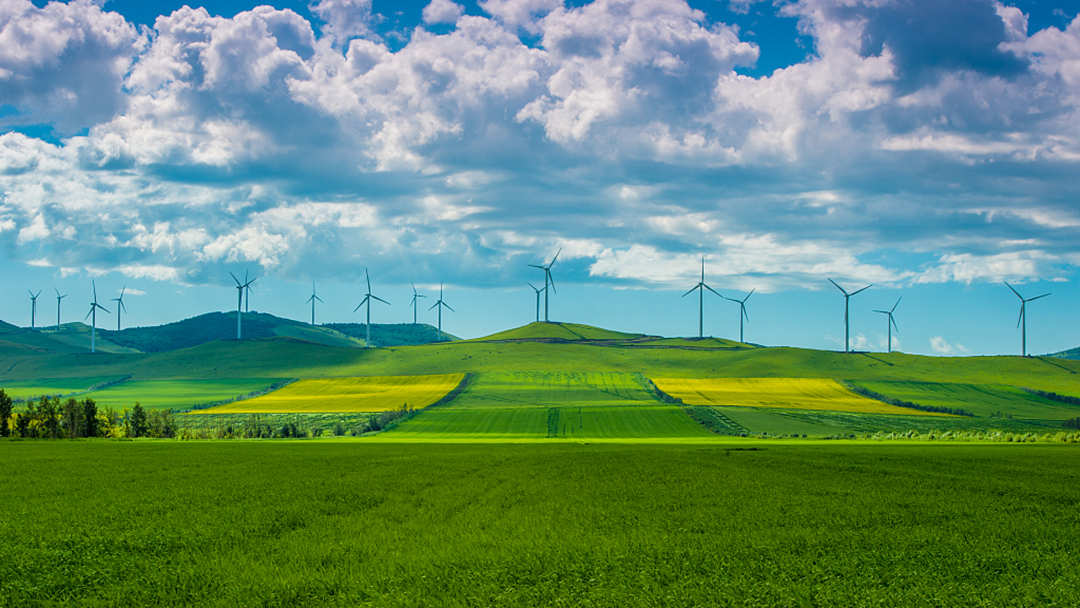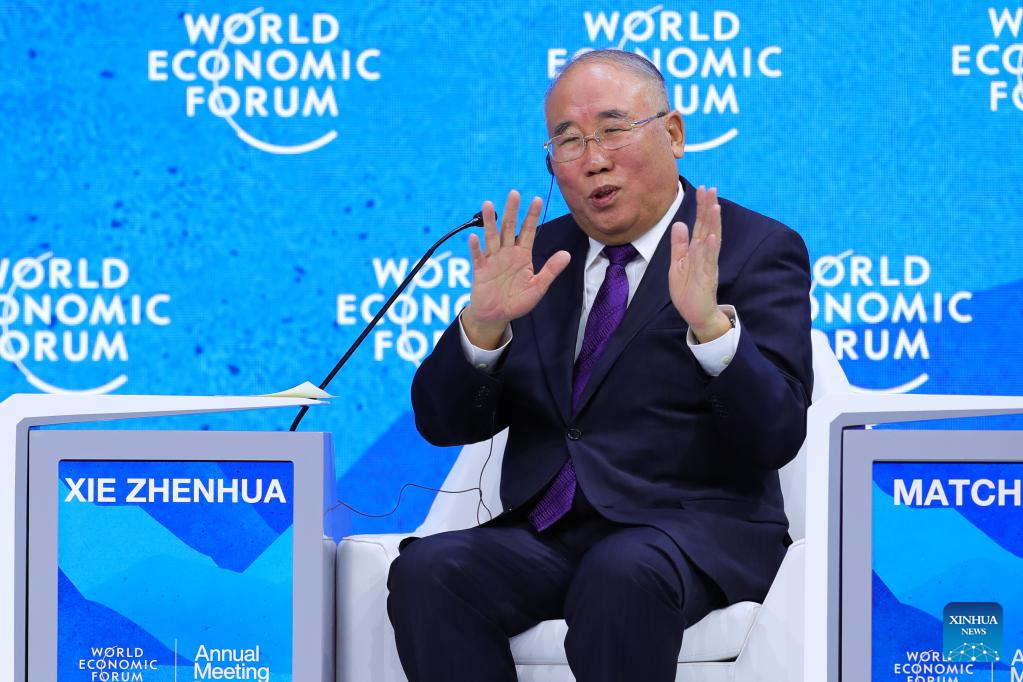
China targets 25 percent non-fossil energy use by 2030 and over 80 percent use by 2060, according to guideline to implement carbon peak and neutrality released on October 24, 2021. /CFP
China targets 25 percent non-fossil energy use by 2030 and over 80 percent use by 2060, according to guideline to implement carbon peak and neutrality released on October 24, 2021. /CFP
Editor's Note: Lu Jianfei is a senior consultant at State Grid Energy Research Institute and specializes in energy, SOE reform and corporate governance. She holds a doctorate in management from Renmin University of China. The article reflects the author's opinions and not necessarily the views of CGTN.
European energy prices continue to soar since last winter due to its energy mix and Russia-Ukraine conflict. The price of imported energy in Italy rose in March by 72.5 percent on a yearly basis, according to the National Institute of Statistics. This provokes the worldwide discussion about whether there is a balance between energy green transition and energy security.
REPowerEU: EU's response to energy crisis
The energy crisis showed up last winter with rising energy prices, which are being pushed ever higher due to the limited supplies this year. As a result, the EU has set its plan for energy green transition, aiming to achieve climate neutrality by 2050. The Fit for 55 package, referring to the EU's goal of cutting greenhouse gas emissions by at least 55 percent by 2030, is an intermediate step towards climate neutrality.
Based on the Fit for 55, the European Commission has presented the REPowerEU plan as an additional response to the energy crisis. It aims to reduce the EU's energy reliance on Russian fossil fuels and tackle the climate crisis. REPowerEU has several main points, including energy conservation, diversification of energy supplies, and accelerated roll-out of renewable energy to replace fossil fuels in homes, industry and power generation. Solar energy is becoming one of the most important renewable energies in Europe. The EU Solar Energy Strategy released on May 18 has set the goal 740 GWdc of solar PV by 2030. This is a giant leap from the previous goals given the urgency of cutting down the reliance on Russian fossil fuels.
However, all those attempts about energy transition reveal the balance between energy security and energy transition. Specifically, switching to new energy doesn't simply mean to find a new way to power homes. It means the entire society needs to re-evaluate how they make money and where they source their energy from. It would require millions of homes, schools, businesses, public buildings and transport centers to adjust how they power themselves. This doesn't happen overnight. And the process can be a potential risk for energy security.

Xie Zhenhua, China's special envoy for climate change, attends a session themed "Safeguarding Our Planet and People" at the World Economic Forum Annual Meeting 2022 in Davos, Switzerland, May 24, 2022. /Xinhua
Xie Zhenhua, China's special envoy for climate change, attends a session themed "Safeguarding Our Planet and People" at the World Economic Forum Annual Meeting 2022 in Davos, Switzerland, May 24, 2022. /Xinhua
China's answer to the energy dilemma
The Chinese delegation led by special climate envoy Xie Zhenhua met with the chief of the International Energy Agency (IEA) on May 23 in Davos to discuss the global energy transition and China's green push. During the meeting with the IEA, Xie discussed China's efforts and policy moves to respond to global climate change and promote renewable energy. He stressed that China will take action from three aspects: policy formulation, energy transformation and forest carbon sinks.
These statements have made China's position very clear on the balance of energy security and energy transition. From the perspective of energy security, the energy structure will face great changes. It is necessary to bear the pain of transformation and change for a short period. But in the long run, we will unswervingly take the road of low-carbon high-quality development and gradually reduce dependence on fossil fuels to achieve intrinsic energy security.
In the short term, reducing carbon emissions can help ease the pressure on energy supply security. Saving energy is China's basic national policy. China's total energy consumption reached 4.98 billion tonnes of standard coal equivalent and unit GDP energy consumption was 1.5 times the world average in 2020, which revealed the energy efficiency was still low. As a result, implementing energy conservation and strengthening carbon emission reduction with greater efforts will not only help alleviate the pressure of energy supply security, but also avoid overdrawing future strategic resources, environmental space and development potential.
In the long run, carbon emission reduction is the strategic choice to ensure China's energy security. With the in-depth promotion of clean and low-carbon energy transition, China will gradually get rid of fossil energy dependence. According to the preliminary calculations of relevant research institutions, the proportion of non-fossil energy consumption in China will increase from the current 16 percent to more than 80 percent by 2060. And the proportion of non-fossil energy power generation will increase from 34 percent to more than 90 percent. As a result, a safe and sustainable energy supply system with non-fossil energy as the main body will be built to achieve deep decarbonization and intrinsic security in the energy field.
(If you want to contribute and have specific expertise, please contact us at opinions@cgtn.com. Follow @thouse_opinions on Twitter to discover the latest commentaries in the CGTN Opinion Section.)

